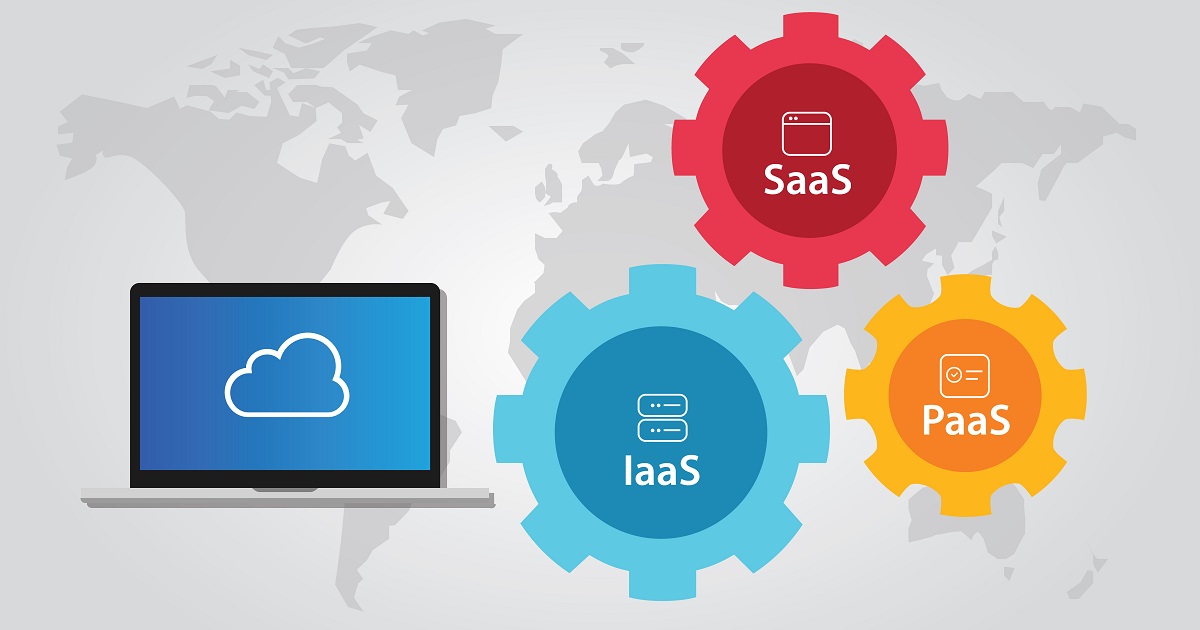
Hyper-Converged Infrastructure
Article | October 10, 2023
Adopting DevOps and CD in IaaS environments is a strategic imperative for organizations seeking to achieve agility, competitiveness, and customer satisfaction in their software delivery processes.
Contents
1. Introduction
2. What is IaaS Virtualization?
3. Virtualization Techniques for DevOps and Continuous Delivery
4. Integration of IaaS with CI/CD Pipelines
5. Considerations in IaaS Virtualized Environments
5.1. CPU Swap Wait
5.2. CPU System/Wait Time for VKernel:
5.3. Memory Balloon
5.4.Memory Swap Rate:
5.5. Memory Usage:
5.6. Disk/Network Latency:
6. Industry tips for IaaS Virtualization Implementation
6.1. Infrastructure Testing
6.2. ApplicationTesting
6.3. Security Monitoring
6.4. Performance Monitoring
6.5. Cost Optimization
7. Conclusion
1. Introduction
Infrastructure as a Service (IaaS) virtualization presents significant advantages for organizations seeking to enhance their agility, flexibility, and speed to market within the DevOps and continuous delivery frameworks. Addressing the associated risks and challenges is crucial and can be achieved by employing the appropriate monitoring and testing techniques, enlisted further, in this blog.
IaaS virtualization allows organizations to provision and de-provision resources as needed, eliminating the need for long-term investments in hardware and data centers. Furthermore, IaaS virtualization offers the ability to operate with multiple operating systems, databases, and programming languages, empowering teams to select the tools and technologies that best suit their requirements.
However, organizations must implement comprehensive testing and monitoring strategies, ensure proper security and compliance controls, and adopt the best resource optimization and management practices to leverage the full potential of virtualized IaaS. To achieve high availability and fault tolerance along with advanced networking, enabling complex application architectures in IaaS virtualization, the blog mentions five industry tips.
2. What is IaaS Virtualization?
IaaS virtualization involves simultaneously running multiple operating systems with different configurations. To run virtual machines on a system, a software layer known as the virtual machine monitor (VMM) or hypervisor is required.
Virtualization in IaaS handles website hosting, application development and testing, disaster recovery, and data storage and backup. Startups and small businesses with limited IT resources and budgets can benefit greatly from virtualized IaaS, enabling them to provide the necessary infrastructure resources quickly and without significant capital expenditures.
Virtualized IaaS is a potent tool for businesses and organizations of all sizes, enabling greater infrastructure resource flexibility, scalability, and efficiency.
3. Virtualization Techniques for DevOps and Continuous Delivery
Virtualization is a vital part of the DevOps software stack. Virtualization in DevOps process allows teams to create, test, and implement code in simulated environments without wasting valuable computing resources. DevOps teams can use the virtual services for thorough testing, preventing bottlenecks that could slow down release time. It heavily relies on virtualization for building intricate cloud, API, and SOA systems. In addition, virtual machines benefit test-driven development (TDD) teams that prefer to begin their troubleshooting at the API level.
4. Integration of IaaS with CI/CD Pipelines
Continuous integration is a coding practice that frequently implements small code changes and checks them into a version control repository. This process not only packages software and database components but also automatically executes unit tests and other tests to provide developers with vital feedback on any potential breakages caused by code changes.
Continuous testing integrates automated tests into the CI/CD pipeline. For example, unit and functionality tests identify issues during continuous integration, while performance and security tests are executed after a build is delivered in continuous delivery. Continuous delivery is the process of automating the deployment of applications to one or more delivery environments.
IaaS provides access to computing resources through a virtual server instance, which replicates the capabilities of an on-premise data center. It also offers various services, including server space, security, load balancing, and additional bandwidth. In modern software development and deployment, it's common to integrate IaaS with CI/CD pipelines. This helps automate the creation and management of infrastructure using infrastructure-as-code (IAC) tools. Templates can be created to provision resources on the IaaS platform, ensuring consistency and meeting software requirements. Additionally, containerization technologies like Docker and Kubernetes can deploy applications on IaaS platforms.
5. Considerations in IaaS Virtualized Environments
5.1. CPU Swap Wait
The CPU swap wait is when the virtual system waits while the hypervisor swaps parts of the VM memory back in from the disk. This happens when the hypervisor needs to swap, which can be due to a lack of balloon drivers or a memory shortage. This can affect the application's response time. One can install the balloon driver and/or reduce the number of VMs on the physical machine to resolve this issue.
5.2. CPU System/Wait Time for VKernel
Virtualization systems often report CPU or wait time for the virtualization kernel used by each virtual machine to measure CPU resource overhead. While this metric can't be directly linked to response time, it can impact both ready and swap times if it increases significantly. If this occurs, it could indicate that the system is either misconfigured or overloaded, and reducing the number of VMs on the machine may be necessary.
5.3. Memory Balloon
Memory ballooning is a memory management technique used in virtualized IaaS environments. It works by injecting a software balloon into the VM's memory space. The balloon is designed to consume memory within the VM, causing it to request more memory from the hypervisor. As a result, if the host system is experiencing low memory, it will take memory from its virtual infrastructures, thus negatively affecting the guest's performance, causing swapping, reduced file-system buffers, and smaller system caches.
5.4. Memory Swap Rate
Memory swap rate is a performance metric used in virtualized IaaS environments to measure the amount of memory being swapped to disk. When the swap rate is high, it leads to longer CPU swap times and negatively affects application performance. In addition, when a VM is running, it may require more memory than is physically available on the server. In such cases, the hypervisor may use disk space as a temporary storage area for excess memory. Therefore, to optimize, it is important to ensure that VMs have sufficient memory resources allocated.
5.5. Memory Usage
Memory usage refers to the amount of memory being used by a VM at any given time. Memory usage is assessed by analyzing the host level, VM level, and granted memory. When memory usage exceeds the available physical memory on the server, the hypervisor may use disk space as a temporary storage area for excess memory, leading to performance issues. The disparity between used and granted memory indicates the overcommitment rate, which can be adjusted through ballooning.
5.6. Disk/Network Latency
Some virtualization providers provide integrated utilities for assessing the latency of disks and network interfaces utilized by a virtual machine. Since latency directly affects response time, increased latency at the hypervisor level will also impact the application. An excessive amount of latency indicates the system is overloaded and requires reconfiguration. These metrics enable us to monitor and detect any negative impact a virtualized system might have on our application.
6. Industry tips for IaaS Virtualization Implementation
Testing, compliance management and security arecritical aspects of managing virtualized IaaS environments . By implementing a comprehensive strategy, organizations ensure their infrastructure and applications' reliability, security, and performance.
6.1. Infrastructure Testing
This involves testing the infrastructure components of the IaaS environment, such as the virtual machines, networks, and storage, aiming to ensure the infrastructure is functioning correctly and that there are no performance bottlenecks, security vulnerabilities, or configuration issues. Testing the virtualized environment, storage testing (testing data replication and backup and recovery processes), and network testing are some of the techniques to be performed.
6.2. Application Testing
Applications running on the IaaS virtual environment should be thoroughly tested to ensure they perform as expected. This includes functional testing to ensure that the application meets its requirements and performance testing to ensure that the application can handle anticipated user loads.
6.3. Security Monitoring
Security monitoring is critical in IaaS environments, owing to the increased risks and threats. This involves monitoring the infrastructure and applications for potential security threats, vulnerabilities, or breaches. In addition, regular vulnerability assessments and penetration testing help identify and address potential security issues before they become significant problems.
6.4. Performance Monitoring
Performance monitoring is essential to ensuring that the underlying infrastructure meets performance expectations and has no performance bottlenecks. This comprises monitoring metrics such as CPU usage, memory usage, network traffic, and disk utilization. This information is used to identify performance issues and optimize resource usage.
6.5. Cost Optimization
Cost optimization is a critical aspect of a virtualized IaaS environment with optimized efficiency and resource allocation. Organizations reduce costs and optimize resource usage by identifying and monitoring usage patterns and optimizing elastic and scalable resources. It involves right-sizing resources, utilizing infrastructure automation, reserved instances, spot instances (unused compute capacity purchased at a discount), and optimizing storage usage.
7. Conclusion
IaaS virtualization has become a critical component of DevOps and continuous delivery practices. To rapidly develop, test, and deploy applications with greater agility and efficiency by providing on-demand access to scalable infrastructure resources to Devops teams, IaaS virtualization comes into picture. As DevOps teams continue to seek ways to streamline processes and improve efficiency, automation will play an increasingly important role. Automated deployment, testing, and monitoring processes will help reduce manual intervention and increase the speed and accuracy of development cycles. In addition, containers will offer a lightweight and flexible alternative to traditional virtualization, allowing DevOps teams to package applications and their dependencies into portable, self-contained units that can be easily moved between different environments. This can reduce the complexity of managing virtualized infrastructure environments and enable greater flexibility and scalability. By embracing these technologies and integrating them into their workflows, DevOps teams can achieve greater efficiency and accelerate their delivery of high-quality software products.
Read More

Hyper-Converged Infrastructure
Article | September 14, 2023
One of the most exciting areas of Vubiq Network’s innovative millimeter wave technology is in the application of ultra high-speed, short-range communications as applied to solving the scaling constraints and costs for internal data center connectivity and switching. Today’s limits of cabled and centralized switching architectures are eliminated by leveraging the wide bandwidths of the millimeter wave spectrum for the high-density communications requirements inside the modern data center. Our patented technology has the ability to provide more than one terabit per second of wireless uplink capacity from a single server rack through an innovative approach to create a millimeter wave massive mesh network. The elimination of all inter-rack cabling – as well as the elimination of all aggregation and core switches – is combined with higher throughput, lower latency, lower power, higher reliability, and lower cost by using millimeter wave wireless connectivity.
Read More

Application Infrastructure, Application Storage
Article | July 19, 2023
IT infrastructure scaling is when the size and power of an IT system are scaled to accommodate changes in storage and workflow demands. Infrastructure scaling can be horizontal or vertical. Vertical scaling, or scaling up, adds more processing power and memory to a system, giving it an immediate boost. Horizontal scaling, or scaling out, adds more servers to the cloud, easing the bottleneck in the long run, but also adding more complexity to the system.
Read More

Application Infrastructure
Article | August 8, 2022
Nowadays, SaaS, IaaS, and PaaS are some of the most common names across the B2B and B2C sectors. This is because they have become the most efficient and go-to tool for starting a business.
Together, they are significantly changing business operations around the globe and have emerged as separate sectors, revamping concepts of various product development, building and delivery processes.
SaaS Vs PaaS Vs IaaS
Each cloud computing model offers specific features and functionalities. Therefore, your organization must understand the differences.
Whether you require cloud-based software to create customized applications, get complete control over your entire infrastructure without physically maintaining it, or simply for storage options, there is a cloud service for you.
No matter what you choose, migrating to the cloud is the future of your business and technology.
What is the Difference?
IaaS: Aka Infrastructure as a Service IaaS allows organizations to manage their business resources such as their servers, network, and data storage on the cloud.
PaaS: Aka Platform as a Service allows businesses and developers to build, host, and deploy consumer-facing apps.
SaaS: Aka Software as a Service offers businesses and consumers cloud-based tools and applications for everyday use.
You can easily access all three cloud computing tools on the internet browser or online apps.
A great example would be Google Docs; Instead of working on one MS Word document and sending it around to each other, Google Docs allows your team to work and simultaneously collaborate online.
The Market Value
A recent report says that by 2028, the global SaaS market will be worth $716.52 billion, and by 2030, the global PaaS market will be worth $319 billion. Moreover, the global IaaS market is expected to be worth $292.58 billion by 2028, giving market players many opportunities.
XaaS: Everything as a Service
Another term more frequently used in IT is XaaS, short for Everything as a Service. It has emerged as a critical enabler of the Autonomous Digital Enterprise.
XaaS is a term for highly customized, responsive, data-driven products and services that are entirely in the hands of the customer and based on the information they give through everyday IoT devices like cell phones and thermostats.
Businesses can utilize this data generated over the cloud to deepen their customer relationships, sustain the sale beyond the initial product purchase and innovate faster.
Conclusion
Cloud computing is not restricted by physical hardware or office space. On the contrary, it allows your remote teams to work more effectively and seamlessly than ever, boosting productivity. Therefore, it offers maximum flexibility and scalability.
IaaS, SaaS, PaaS; whichever solution you choose, options are always available to help you and your team move into cloud computing.
Read More